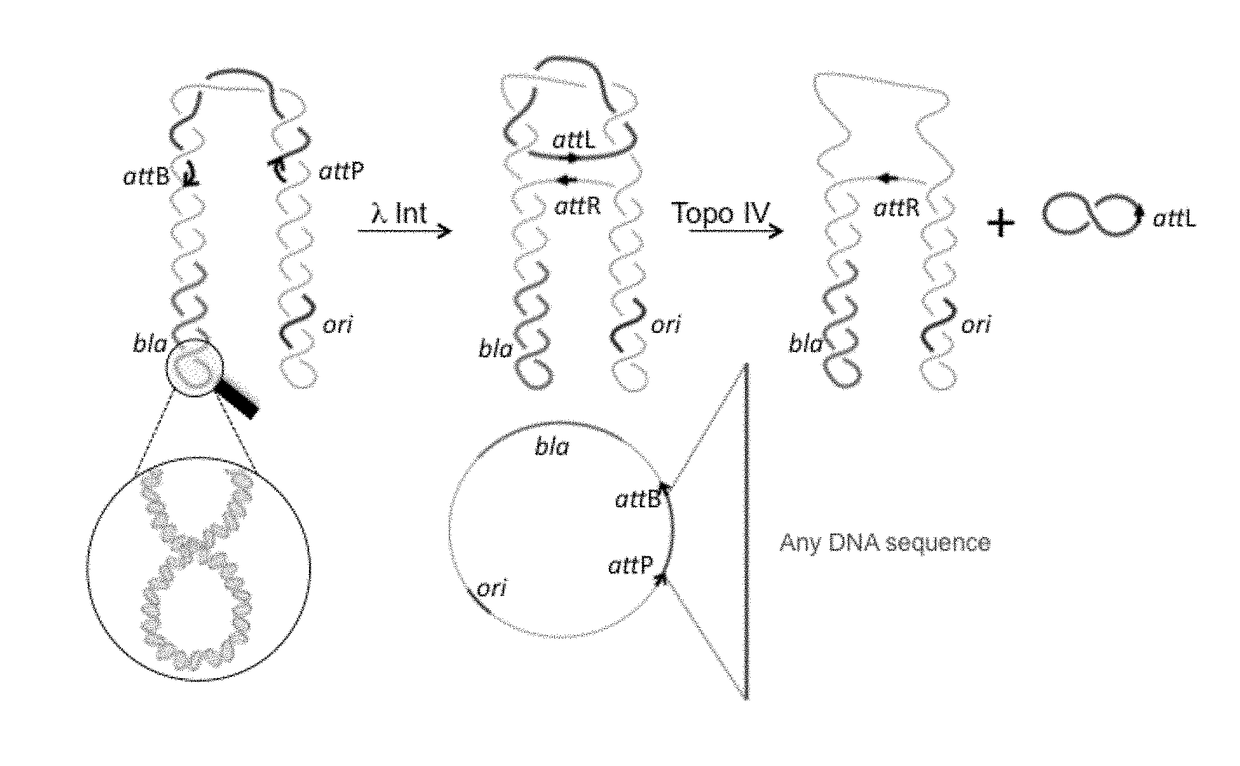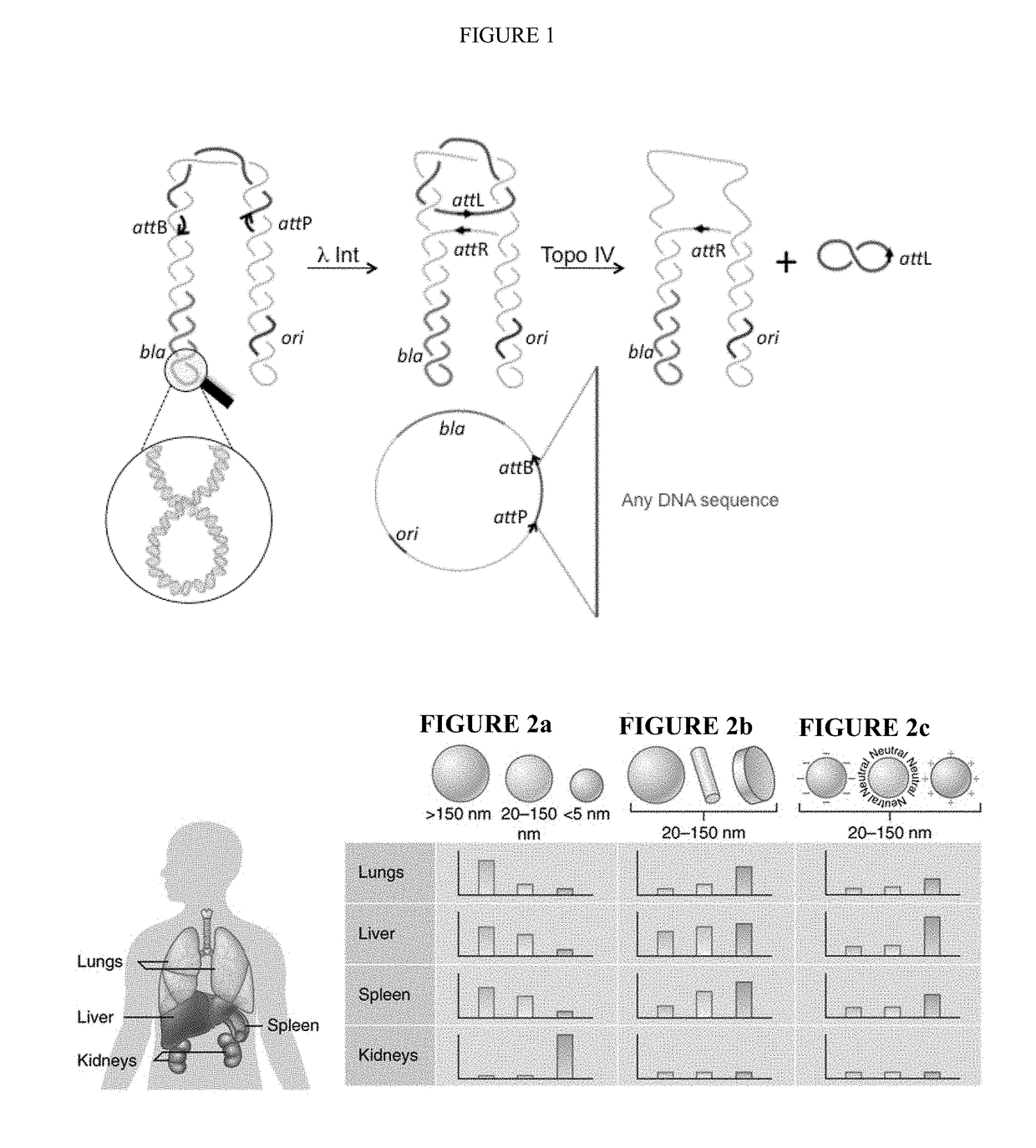Targeting minivectors to specific tissue using shape
a mini-vector and tissue technology, applied in the field of mini-vectors, can solve the problems of inability to control the shape of dna molecules, inability to increase the particle aspect ratio (ar), and decrease so as to promote cellular phagocytosis, reduce the efficiency of macrophage phagocytosis, and increase the circulation time
- Summary
- Abstract
- Description
- Claims
- Application Information
AI Technical Summary
Benefits of technology
Problems solved by technology
Method used
Image
Examples
Embodiment Construction
[0066]The disclosure provides novel minivectors having defined, non-transient 3D structures or shapes and methods of using the shaped minivectors to preferentially target their delivery to particular tissues based on that shape. Also included are mathematical methods of designing specific shapes, which are then executed in a DNA form, usually by DNA synthesis.
[0067]Sequence dependence of the conformational distribution of DNA minicircles under various levels of torsional stress was previously an unsolved problem, which prevented the manufacture and use of shaped minivectors.
[0068]By nicking minivectors and religating in the presence of intercalators or HmfB we can precisely control the level of supercoiling. The torsional strain associated with negative supercoiling (underwinding) leads to localized disruptions in the helical structure of DNA. These localized disruptions modify the properties of DNA, generating a hyperflexible site. This, coupled with the tendency of supercoiled DNA...
PUM
| Property | Measurement | Unit |
|---|---|---|
| Fraction | aaaaa | aaaaa |
| Length | aaaaa | aaaaa |
| Length | aaaaa | aaaaa |
Abstract
Description
Claims
Application Information
 Login to View More
Login to View More - R&D
- Intellectual Property
- Life Sciences
- Materials
- Tech Scout
- Unparalleled Data Quality
- Higher Quality Content
- 60% Fewer Hallucinations
Browse by: Latest US Patents, China's latest patents, Technical Efficacy Thesaurus, Application Domain, Technology Topic, Popular Technical Reports.
© 2025 PatSnap. All rights reserved.Legal|Privacy policy|Modern Slavery Act Transparency Statement|Sitemap|About US| Contact US: help@patsnap.com



